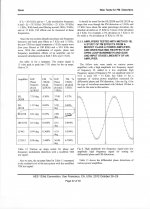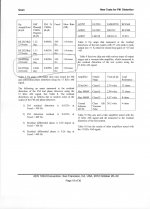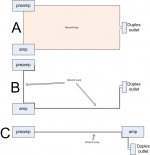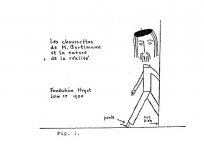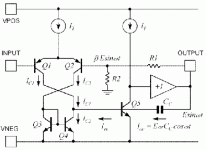Gee, and I thought OPPO to be pretty good. Shows what I don't know.
Hi John,
How can the OPPO be that good, when you wrote:
Well, I guess I will have to stick to SACD, DVD, etc. CD is sometimes OK, but not always.
Just goes to show how I can be so 'ignorant'. '-)
It seems to me that you do know, once you trust your ears.
And it is, if you approach it without the chains of tradition and preconception.
So, how come most of the digital gear sound so crappy?
They do not.So, how come most of the digital gear sound so crappy?
Only the last stages: DACs.
No question of AC wires. Just perfect reclocking, perfect power supply for conversion linearity; good DACs and accurate analog stages. All that parts are expensive enough for manufacturers do not care too much about it, for an audience witch do not care or hear the difference.
As a DIYer, you can set only one in your system, all digital connections, and get rid of any problem. Nothing mysterious or complicated.
I wonder why John do not put his nose in it (it is so simple), and propose a digital preamp for his golden clients with the kind of sound he likes.
Last edited:
So, how come most of the digital gear sound so crappy?
Mostly, it's the recording and mastering; the playback gear has much less to do with it. With the few really good recordings out there, you get exactly what you're supposed to and the sound can be terrific. With other ones... well... you get the sound the producers intended with no low resolution media to plaster over the cracks. That may not be to your liking- it's certainly not to mine.
Well said. More your system is good and sharp, less you find good enough records, as you can ear all defects. Even those that producers never listened in their recording studios. Who can afford Beatles remastered CDs ?and the sound can be terrific.
The old story of chemical photo VS digital 24Mpixels full frame bodies.
Last edited:
Sounds that the designers of the AMR have learnt a thing or two. My suspicion is that the power supply of the Oppo is what's causing problems here ...This way, CDs sound much better than the analog out of the OPPO, yet the CDs are barely tolerated this way, while they were highly enjoyable with CDP serving both as transport and DAC.
It is my experience that in audio everything matters, including power cable and interconnect cables. In digital audio, it is far more noticeable that everything matters.
There's nothing really new under the sun: in HiFi News, many, many years ago, a key music reviewer couldn't stand CDs until he tried the first Stax CDP. Ah-ha, he said, finally, music!! And what had Stax done? They took a cheap and nasty Sanyo, all plastic inside, disabled its internal DAC and slung a metal box underneath to hold their own implementation of the DAC side of things, using a separate mains cord to power this box. No SPDIF link, they just fed the drive's signal through with a direct cable. And it made music, by virtue of optimising the crucial part of the mechanism in this simple fashion.
Frank
Well, I'm going to vigorously disagree. My aim is for every, repeat, every recording to be "magic" to listen to, and this is achievable if one goes far enough along the way in optimising a system. There is a point where the human hearing mechanism kicks in to "plaster over those cracks" but it ain't gonna happen unless you go the yards, in tweaking a setup. At the halfway point, yes, most recordings sound pretty bloody awful, but that's because you're only at the halfway point ...Mostly, it's the recording and mastering; the playback gear has much less to do with it. With the few really good recordings out there, you get exactly what you're supposed to and the sound can be terrific. With other ones... well... you get the sound the producers intended with no low resolution media to plaster over the cracks. That may not be to your liking- it's certainly not to mine.
Frank
Both AD797 and the supa stuff discussed in 'Discrete Opamp Open Design" need meticulous attention to earthing & decoupling. As does a 5532 or even NJM4558 to achieve their potential.
I chose 4558 cos its a cheapo OPA that blitzes the Quan test and will probably do well on Hirata too. Unlike some Golden Pinnae stuff that doesn't.4558?
4558s do vary. The NJM version is better than RC4558 which Quan tested in my experience for noise, slew & THD.
I'm with Frank. IMHO if you take meticulous care over important things like earthing & decoupling, cheapo stuff can beat Golden Pinnae stuff hand carved from Unobtainium by virgins.
JC, did you do the Hirata tests on Blowtorch? Don't disappoint us faithful.
JC, thanks for pages 19 & 22 of Quan, 2012.4558?
You might like to have a look at Table 17 on page 25 too.
Any news of your Hirata results for Blowtorch?
When are you going to do Quan's test on Blowtorch so we can compare with 4558 etc?
I'm sure it will do much better than this cheapo rubbish.
John; I found 4558 adequate in channel strips of TOA console when biased each to + rail by 6K8 resistors. Did not find any reason to replace them by more modern and expensive opamps, if each channel is used by a microphone or musical instrument. However, it does not mean that I will use them in either my mic preamp, or power amp designs, where power amplification is maximal. But I see no reason to replace them by anything else in the console strips. However, I found economical to replace them by OPA1612 in summing amps, adding SOA/DIP adapters. I Don't enjoy very much that new fashion to build prototypes not designer-friendly. Initially TI guys on AES stand promised me to ship that BB samples in DIP cases, but did not keep that promise. Shame on them!
Scott, does AD make designer-friendly samples, or just SIM models for iKids with iPads only?
Scott, does AD make designer-friendly samples, or just SIM models for iKids with iPads only?
At the time i was in concern with this kind of stuff, AD was the coolest company you can dream of. Samples, test boards, and help to find the parts you needed. The technician-Commercial i was in contact with, in Paris was near a friend of mine, after some time.Scott, does AD make designer-friendly samples, or just SIM models for iKids with iPads only?
Pity, now, lot of my preferred products from them have disappeared.
At the time i was in concern with this kind of stuff, AD was the coolest company you can dream of. Samples, test boards, and help to find the parts you needed. The technician-Commercial i was in contact with, in Paris was near a friend of mine, after some time.
Pity, now, lot of my preferred products from them have disappeared.
Looks like marketing iKids took over guys with oScilloscopes and sOldering iRons..,... sAd...
4558, well that restrained the discussion, didn't it? Scott, are you not prepared to DEFEND the use of the 4558, even with serious audiophiles? '-)
The problem with the 4558 is that it is virtually an 'improved' 741, with just about 4 times the slew rate, due to improvements in processing, for what I can presume.
It is a CLASSIC example, (beyond the 741) of a design, PROVEN by Barrie Gilbert to generate PIM. This is what the PIM test was all about. This is why Matti Otala, Richard Sequerra, and Mitch Cotter recommended testing for it as long as 34 years ago.
Finally, somebody has made tests good enough to separate the bad from the better.
Unfortunately, even Ron Quan's tests still have a fairly high residual, that keeps us from evaluating the 'better' op amps completely, as their FM distortion (if any) lies below the residual of Ron's test equipment. Don't worry, improvements will be made. Maybe, a BIG company will address the issue and give us serious test equipment to measure this distortion. I sure would hope so.
The problem with the 4558 is that it is virtually an 'improved' 741, with just about 4 times the slew rate, due to improvements in processing, for what I can presume.
It is a CLASSIC example, (beyond the 741) of a design, PROVEN by Barrie Gilbert to generate PIM. This is what the PIM test was all about. This is why Matti Otala, Richard Sequerra, and Mitch Cotter recommended testing for it as long as 34 years ago.
Finally, somebody has made tests good enough to separate the bad from the better.
Unfortunately, even Ron Quan's tests still have a fairly high residual, that keeps us from evaluating the 'better' op amps completely, as their FM distortion (if any) lies below the residual of Ron's test equipment. Don't worry, improvements will be made. Maybe, a BIG company will address the issue and give us serious test equipment to measure this distortion. I sure would hope so.
Last edited:
The other socks go to mars. That's what the NASA announcement is going to be ..they found a mountain of single socks.Here is one more unexplained phenomenon:
An externally hosted image should be here but it was not working when we last tested it.
Cat5e cables are 100 ohm impedance, and all four pairs are orthogonal to each other due to different twist pitches. Do not bother twisting the overall cables into any fancy braid pattern, it makes no difference. Just bundle the cables.Occasion to ask to Jneutron how to build a cable with 6 ohms impedance from several 100 Ohms ones ?
If you make a cable using all the stripes as negative and all the solids as positive, you create a cable impedance which will be 100 divided by n, n being the number of pairs. Number of pairs is simply 100/z, z being the final desired impedance.
For 6 ohm z, 100/6 is 16 pairs, or 4 full cat cables.
I made a roughly 4 ohm 15 foot long cable using 6 cat5e cables, 24 pair. It passed a 40 volt step in 10 microseconds to a 1 meter long copper foil stripline half inch wide separated by a 1 mil thick kapton layer, to a 4 ohm load in liquid helium. No overshoot or ringing. edit(please forgive my mixing of metric/english units..)
Mike, once again regarding transient spikes at the output during light switch turn-on. As a cure, try:
- everything in class II.
- no ground loops. Especially protective earth loops must be avoided. This is assured when components in class II.
- shielding continuity must be fulfilled, everywhere and in every component. Audiophile signal link cables where shield is connected only at one end are not allowed if you fight with EMI/RFI.
- no signal transformers outside amplifier cases.
- properly shielded circuits with high HF PSRR.
In case you keep these recommendations, you would not need to use additional mains filters.
Or, select plan B or C from my pic, see below.
Other good sources of info are the IEEE standards and EU Directives on EMC.
IEEE-1050 was great, although retired.
Here's the pic. Option A is typical of small home systems with no powered sub. If you use a separate outlet for the source, you extend the ground loop to the service panel, worse.
Option B is very simple, wrap the source line cord around the IC's, then around the amp power cord to the outlet.
Option C is a small variation of B. I cannot guarantee it will work for long runs however, as I have only done if for 125 foot runs of unbalanced line level between the source and the amp, with 15 kW of scr based lights, a quarter million volt vandygraf, and a toro 700 leafblower. Houses typically are worse...
jn
Attachments
Last edited:
Wavebourn, I agree that in mid fi applications, the 4558 is 'adequate' I have been listening through 4558's on an SACD player that I have had for the last 10 years or more. Without DIRECT COMPARISON with better equipment, it is difficult to find any problem. YET, Barrie Gilbert's analysis PREDICTS FM distortion, so we should note it, and perhaps avoid it with our 'best' designs.
The other socks go to mars. That's what the NASA announcement is going to be ..they found a mountain of single socks.
jn
OT: a pretty close guess: Limmy's Show - Just be the dug. - YouTube
Here is one more unexplained phenomenon:
An externally hosted image should be here but it was not working when we last tested it.
Perhaps entangling the socks would help
Attachments
- Status
- Not open for further replies.
- Home
- Member Areas
- The Lounge
- John Curl's Blowtorch preamplifier part II
